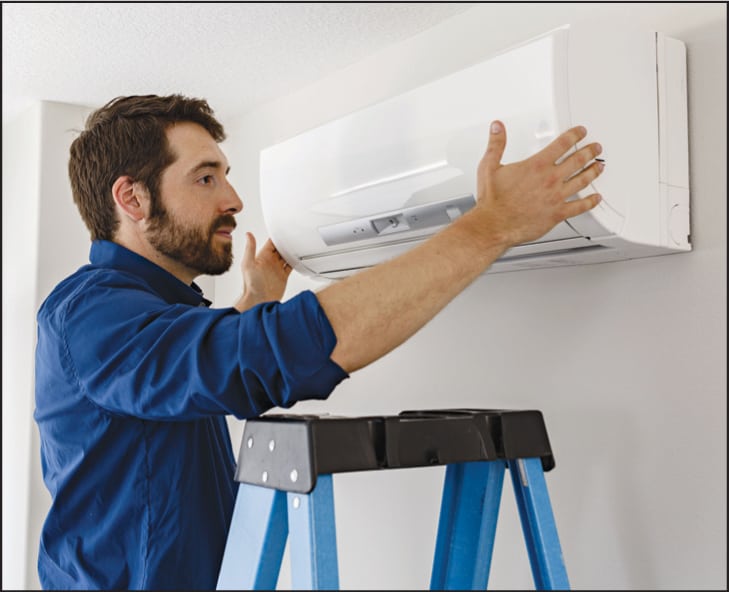Dear Pat: My husband and I are tired of paying such high electric bills during the winter. We think our winter bills are high because of our baseboard heaters and our summer bills are high because of our window AC units. Our neighbors just installed a ductless heat pump system in their home. Do you think that would work for us? — Karen
Dear Karen: Mini-split ductless heat pumps are becoming more popular for good reason. They can heat efficiently even when winter temperatures drop below the freezing point, and they are an economical and energy-efficient replacement for window AC units.
Ductless heat pumps are often installed as primary heating sources and paired with backup systems that kick in when outside temperatures are extremely cold. Baseboard heaters are electric resistance systems and use much more energy than heat pumps, which just move heat into or out of the home. If you make this change, you should reduce your heating costs considerably. Heat pumps work harder as the outside air temperature drops, but combining the heat pump with a backup heating system solves that problem.
I recently spoke with Joe Hull, an energy services adviser with Midstate Electric Cooperative in Oregon. Members there have found that ductless units with backup heating systems can work effectively to as low as minus 28 degrees.
A ductless heat pump could be an ideal solution if your home doesn’t have a duct system. If your existing ductwork is in poor condition, installing a ductless heat pump may be more practical or less expensive than repairing, sealing and insulating ducts.
A ductless heat pump has two main components: the outdoor compressor and the indoor air handler. Coolant and electrical lines run through a conduit from the compressor outside the home through the wall to the inside air handler(s).
Ductless heat pumps can be configured in different ways. A common approach that could deliver the most value is to provide heating and cooling to one large zone in the home by using a single compressor and a single air handler. Or you could use one compressor to power as many as four inside air handlers, each with its own thermostat. A home could even have more than one outside compressor.

Scott Mayfield, an expert from Kootenai Electric Cooperative in Idaho, said installing a ductless system in his home had benefits beyond cost savings. “With baseboard heaters, the heat used to rise along the walls, but with the new ductless system, it flows throughout the rooms evenly. It would have been worth switching to ductless for the comfort alone.”
In some parts of the country, duct-less mini-splits are becoming more popular in new home construction as well. In fact, a friend of mine in Hood River, Oregon, had a ductless system installed in her new home.
Ductless heat pumps are often a great solution, but as you explore this option, it would be wise to consider:
- What are the other investments you could make to reduce your energy costs or improve comfort? Is the ductless heat pump the best option? A thorough energy audit of your home will help answer these questions.
- Are rebates offered by your electric co-op?
- What is the best size and efficiency level for a ductless heat pump in your situation?
- Are there contractors in your area with experience installing ductless heat pumps?
Contact your local electric co-op for a list of recommended contractors, and visit www.energystar.gov for tips on hiring professionals.


